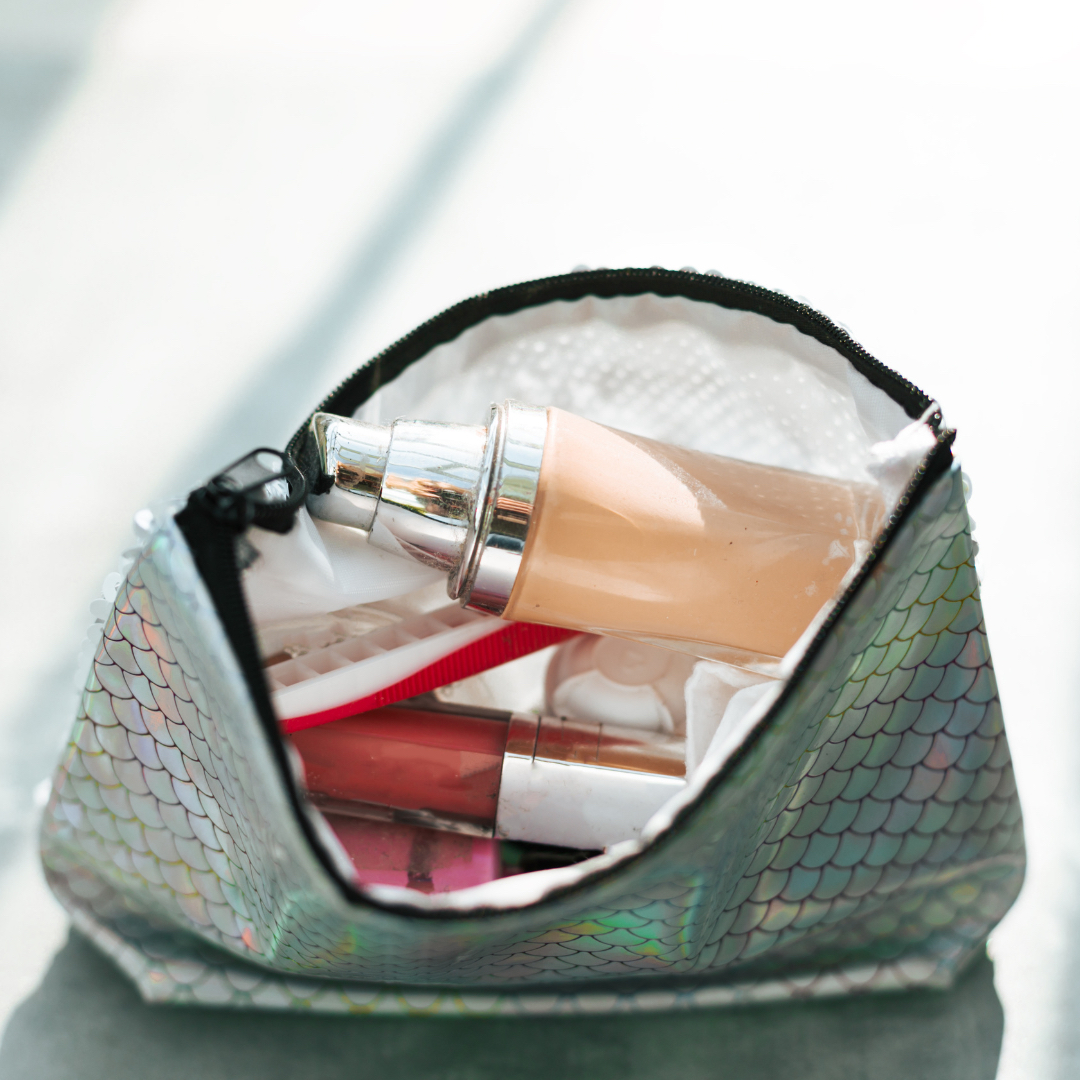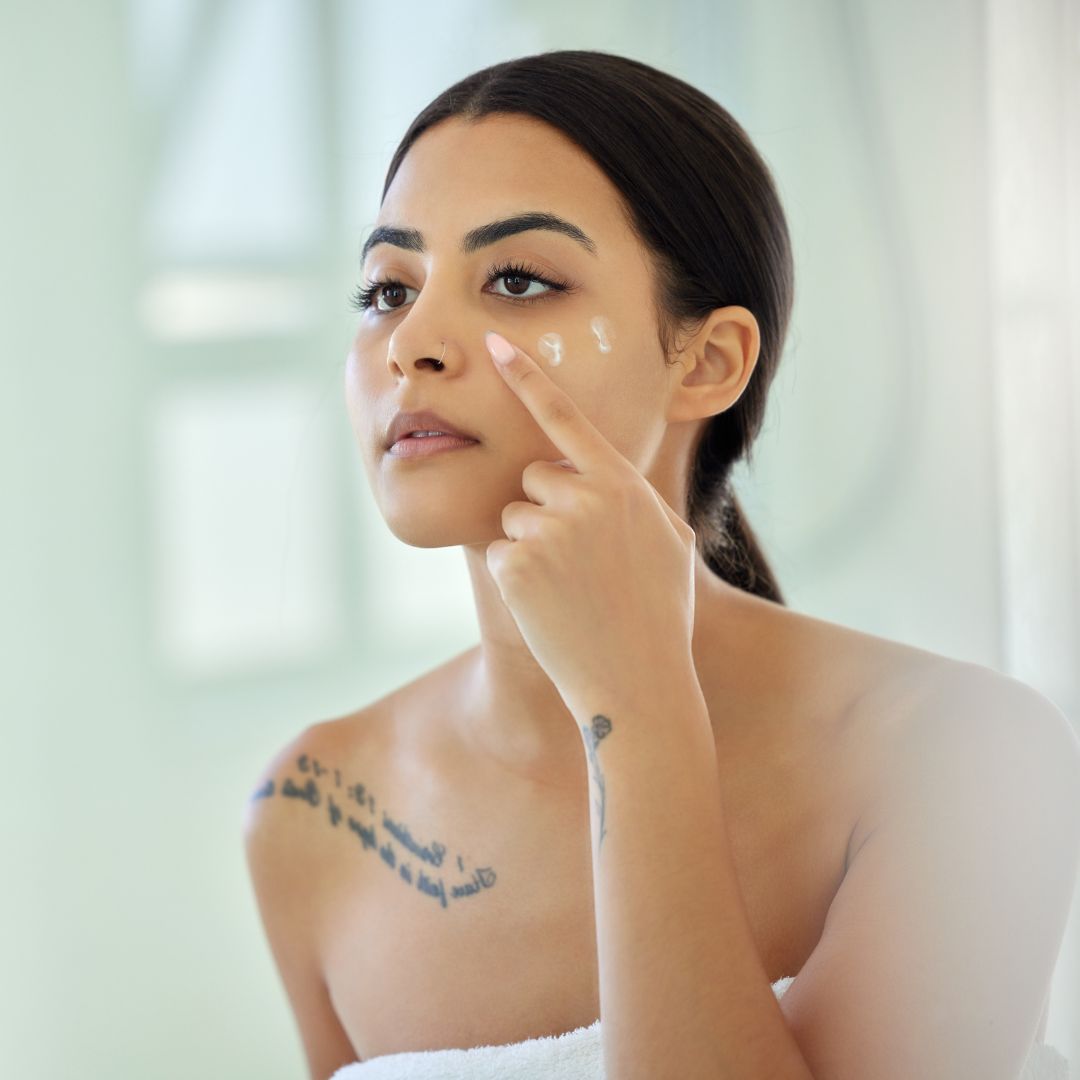You're probably applying your sunscreen wrong—here's how to get it right, according to experts
From scalp to toe, here's what you need to know

By now, we all know how important wearing sunscreen is (yes, even if your skin is acne-prone). It protects us from UVA and UVB rays, and thus, both cancer and skin concerns caused by sun damage, which can occur even on cloudy days. However, SPF (sun protection factor) only actually refers to UVB light, so it’s important to look for a product that has both UVA and UVB protection, which is listed on products as 'broad-spectrum'.
Aside from choosing a product that has enough protection and is one you like using (arguably the most important factor!), the answer to whether or not your sunscreen is doing its job correctly is actually mostly down to how you apply it. Sadly, sloppy application isn’t going to cut it when it comes to sun protection. That's why we called in the help of top experts in the industry to break down exactly how to apply – and reapply – facial sunscreen and body sun cream.
How much sunscreen should I use?
The first step is figuring how much sunscreen you need—and we’re going to take a bet that it’s more than you think. For the face and neck, experts agree the easiest way to remember it is the two finger lengths rule. “Run SPF along the length of your index and middle finger, which is the amount you need to be protected well. Though there’s no reason not to apply extra if you feel like you need it,” says Dr Ash Soni, plastic surgeon and owner of The Soni Clinic.
For the body, a shot glass is approximately the amount you need. If you’re using a spray formula, do about 4 passes on each section of your body before rubbing in.
Sorry to be the bearer of bad news, but SPF in foundation isn’t enough. “It’s so low in quality and quantity, it does nothing,” says Dr Nestor Demosthenous, aesthetics practitioner and owner of Dr Nestor’s Medical and Cosmetic Centre. So it’s always best to apply a separate sunscreen before your make-up, rather than relying on the low factor in your foundation formula. In a regular sunscreen, the experts we spoke to said SPF30 and above is adequate—nothing lower.
Some firm favourites from the experts include, La Roche-Posay’s Anthelios UVMUNE 400 Hydrating Cream SPF 50, Heliocare (there are a bunch of different formulas to suit specific skin type needs) and Altruist.
When should I apply SPF?
It’s important to apply your sunscreen before you step outside to make sure you’re covered. The NHS recommends about 30 minutes before you head outdoors. You also shouldn’t rely on just sunscreen for sun safety. Keeping in the shade, avoiding peak hours of strong sunlight and using UV-protective clothing helps, too.
Marie Claire Newsletter
Celebrity news, beauty, fashion advice, and fascinating features, delivered straight to your inbox!
Should I reapply my SPF?
Reapplication is crucial when it comes to keeping safe in the sun all day. Luckily, there are a few different ways to do this; even some that won’t disrupt your make-up.
Reapplication is important because “UVB only lasts for 1-3 hours, so we need to reapply,” says Dr Nestor. If you don’t wear make-up, you can reapply your chosen base sunscreen with ease. However, if you do wear make-up, there are formulas to help cause as little disruption. Opt for a gel formula that sits on top of the skin nicely without the need for excessive blending. You can even use something like a blending sponge to work it in lightly—just make sure you’re using enough if you try this.
You can use a spray formula, designed specifically for the face. We like the Bondi Sands SPF 50+ Fragrance Free Face Mist and La Roche-Posay Anthelios Sun Protection Face Mist. Just think of them as a regular setting spray but with added benefits! We also really like stick formulas that are excellent for targeted protection. Our favourites include Hello Sunday Invisible Sun Stick and Supergoop! Glow Stick SPF 50.
Finally, there are also mineral-based powders, which are excellent at providing a layer of protection or to pop over the top of make-up. Dr Soni recommends the Skinbetter Science Tone Smart SPF 50 Compact (it’s important to note that despite it being “tone smart”, it won’t work for all skin tones) and the Colourscience Mineral Sunscreen Brush (again, this isn’t necessarily going to work for all skin tones, unfortunately).
There is one caveat about these powder formulas. They’re not enough for your first SPF application. “You need a base of sunscreen before you apply a powder or certain sprays,” explains Dr Soni. Look for something that is water-resistant, but don’t rely on that and skip topping up, especially if you’re in and out of the water and towelling off often.
Don’t forget to apply sunscreen here…
A few areas people often forget are: ears and eyelids, underneath straps, feet and the scalp. The scalp is tricky, but it’s a place where often people get burnt. Unless you’re really committed to using a lotion carefully and getting greasy roots, powders are often your best bet. Dr Soni notes that if you have thinning hair, it’s even more important to protect your scalp as it can be more exposed—and to always make sure you’re taking your sunscreen right up into your hairline.
Tori is a freelance beauty journalist and contributor for Marie Claire. She has written for various titles, including Allure, Glamour, Elle, Refinery29, Brides, and more. Currently training to be a nail tech, Tori is a total nail enthusiast and always has time to talk all things nail art. When she’s not writing about beauty and testing products, Tori can be found walking her rescue dog Pip, drinking great coffee, and eating as many croissants as humanly possible.
-
 Trust me, these Louis Vuitton ballerina-trainer hybrids are about to be everywhere
Trust me, these Louis Vuitton ballerina-trainer hybrids are about to be everywhereThe cool girl kicks of the season
By Jazzria Harris
-
 These are the best wedding shoes you'll want to walk down the aisle in
These are the best wedding shoes you'll want to walk down the aisle inSomething new, something blue
By Lauren Cunningham
-
 The best wedding dresses for every bridal style and budget
The best wedding dresses for every bridal style and budgetThese are the standout gowns of 2025
By Lauren Cunningham
-
 It's the most anticipated skincare launch of 2025 so far—so, does it live up to the hype? MC Beauty Editors decide
It's the most anticipated skincare launch of 2025 so far—so, does it live up to the hype? MC Beauty Editors decideSPF on trial
By Katie Thomas
-
 Every time I use the IT Cosmetics CC Cream I am so impressed by the coverage - here's why
Every time I use the IT Cosmetics CC Cream I am so impressed by the coverage - here's whyA true make-up icon
By Lucy Abbersteen
-
 I'm a beauty editor who has tried most make-up lines, but this affordable brand is one of my go-tos
I'm a beauty editor who has tried most make-up lines, but this affordable brand is one of my go-tosEverything costs £15 and under
By Lucy Abbersteen
-
 Some SPFs can leave the skin looking flat, not these 6 glow-boosting sunscreens
Some SPFs can leave the skin looking flat, not these 6 glow-boosting sunscreensThe perfect remedy for dull autumn/winter skin
By Mica Ricketts
-
 The sun is back and so sun protection is paramount—here are the 18 best SPF moisturisers for all skin types
The sun is back and so sun protection is paramount—here are the 18 best SPF moisturisers for all skin typesBecause sunscreen is a must, seven days a week, 365 days per year
By Katie Thomas
-
 6 ways to care for your hair during summer, according to experts
6 ways to care for your hair during summer, according to expertsBecause the sun can really take its toll
By Grace Lindsay
-
 Does fake tan stop you from getting a real tan? Here's the definitive answer
Does fake tan stop you from getting a real tan? Here's the definitive answerThis is worth knowing
By Shannon Lawlor
-
 After the best sunscreen for acne-prone skin? As blemish-prone beauty editors, these 10 didn't break us out once
After the best sunscreen for acne-prone skin? As blemish-prone beauty editors, these 10 didn't break us out onceIf your skin breaks out at the mere whiff of an SPF, read on
By Shannon Lawlor